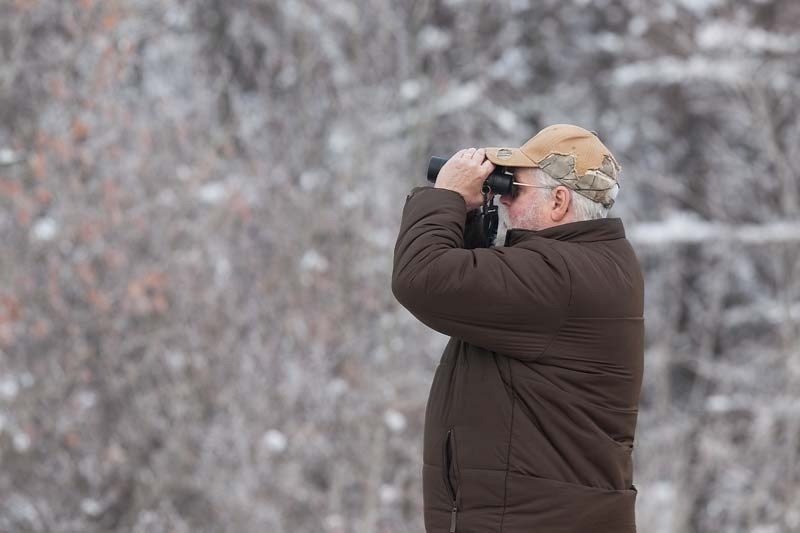Canada appears to be short on redpolls this winter, say local birders, and St. Albert is no exception.
About 148 people braved the cold last Dec. 28 for the 22nd annual St. Albert Christmas Bird Count. The annual survey had residents watch the city's skies and yards all day to track trends in bird populations.
Counters identified 6,578 birds from 33 species during the survey, said count co-ordinator Alan Hingston, none of which were new to the count.
Counters spotted a grand total of zero common or hoary redpolls, Hingston said – something that has only happened once before in count history (in 1994). That's a big drop from last year's count, which featured 735 common redpolls.
Other seed-eating birds such as pine grosbeaks, white-winged crossbills and pine siskins were also absent from the count, Hingston said.
There's been a dearth of redpolls in this year's Christmas bird counts province-wide, confirmed Jocelyn Hudon, curator of ornithology at the Royal Alberta Museum, with none spotted in Lethbridge, Medicine Hat, Milk River, High River or Dinosaur Provincial Park. Edmonton had 144 common redpolls, he noted – down significantly from last year's 2,066.
That seems to be the case everywhere in Canada south of the 55th parallel so far, said Dick Cannings, who co-ordinates Canada's Christmas bird count program for Bird Studies Canada. "There's a few in southern Canada, but not many," he said, while noting that count reports were still coming in. Central Yukon communities, in contrast, have reported hundreds of them.
Northern Canada had a bumper crop of spruce cones this year, Cannings said, and researchers believe this surplus of food allowed many redpolls and other seedeaters to stay up north for the winter. "Why bother moving down south if there's lots of food?" 2012 was also an exceptionally good year for redpolls in southern Canada, he added.
Rare feathers found
Although there weren't any new species in this year's St. Albert count, Hingston said, there were a few rarities.
One was the ring-necked pheasant – a chicken-like bird with a long, pointed tail, a red face, an iridescent green neck and a bold white neck ring. One of these birds was spotted near the Grandin Ravine the day after count day, Hingston said, making it the first sighting of a ring-necked pheasant in town since 1995.
These pheasants are an introduced species that the province used to breed around Brooks for hunters, Hingston said. "They are not well suited to surviving Alberta's winters," he noted, and most die off come snowfall.
Ring-necked-pheasants are an oddity around Edmonton, Hudon said, as there are few places to hide and plenty of predatory coyotes in the city. Most stick to the open country as a result.
This was likely an intentionally released bird, Hingston said, who noted that the birds had been released at the Royal Mayfair Golf Club before. "How that bird got to the Grandin Ravine, I don't suppose I'll ever know."
2013 was a record year for the northern flicker, count records suggest, with some 17 spotted by counters. Northern flickers are brown, black-spotted woodpeckers known to have a brilliant red or yellow underside to their wings.
Spotters also identified a record 246 dark-eyed juncos – about a hundred more than the previous record set in 2007 – and a new high of 280 house finches.
While house finches are native to B.C., Hudon said, researchers believe the ones in Alberta are descended from a flock of finches released from New York City in the 1930s. The birds have spread west ever since, and reached Edmonton about 30 years ago.
House finches first appeared in the St. Albert count in 2006, count records suggest, and have steadily grown in number ever since. Local birders report that they are now more likely to see house finches at their feeders than house sparrows, Hingston said, suggesting that the former may be displacing the latter.
An analysis of count records suggests a downward trend in house sparrow numbers since 2006, but it's unclear if this is linked to the rise of the house finch.
A record seven Eurasian collared-doves were identified during the count, Hingston said. These birds have migrated north from Florida over the years, and first showed up in St. Albert's count in 2010.
Hingston thanked all the count's volunteers and Edmonton's Wild Birds Unlimited for their support.
Count results will now be sent to Bird Studies Canada.




